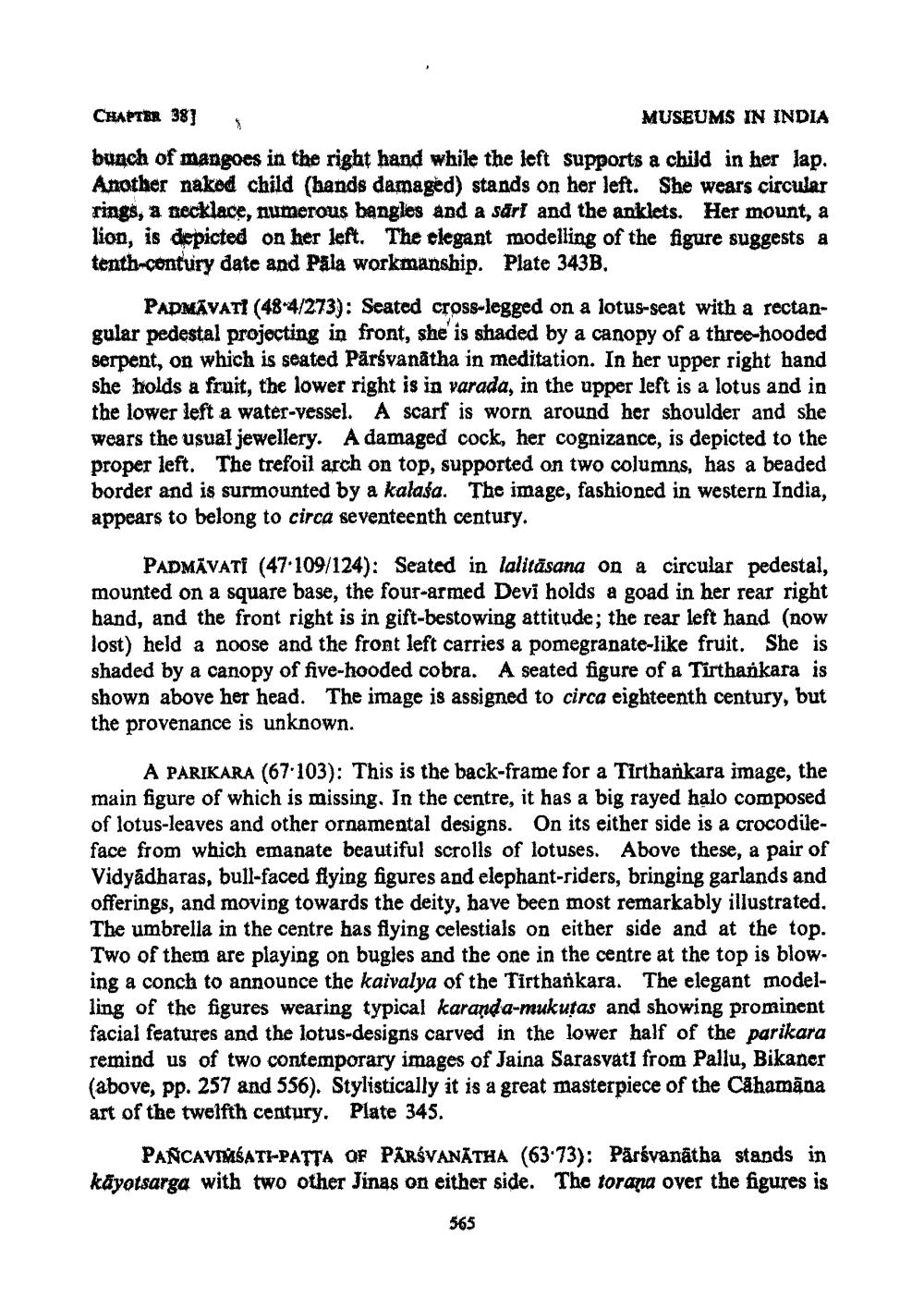________________
CHAPTER 38]
MUSEUMS IN INDIA
bunch of mangoes in the right hand while the left supports a child in her lap. Another naked child (hands damaged) stands on her left. She wears circular rings, a necklace, numerous bangles and a sarl and the anklets. Her mount, a lion, is depicted on her left. The elegant modelling of the figure suggests a tenth-century date and Päla workmanship. Plate 343B.
PADMAVATI (48-4/273): Seated cross-legged on a lotus-seat with a rectangular pedestal projecting in front, she' is shaded by a canopy of a three-hooded serpent, on which is seated Pārsvanatha in meditation. In her upper right hand she holds a fruit, the lower right is in varada, in the upper left is a lotus and in the lower left a water-vessel. A scarf is worn around her shoulder and she wears the usual jewellery. A damaged cock, her cognizance, is depicted to the proper left. The trefoil arch on top, supported on two columns, has a beaded border and is surmounted by a kalala. The image, fashioned in western India, appears to belong to circa seventeenth century.
PADMAVATI (47-109/124): Seated in lalitäsana on a circular pedestal, mounted on a square base, the four-armed Devi holds a goad in her rear right hand, and the front right is in gift-bestowing attitude; the rear left hand (now lost) held a noose and the front left carries a pomegranate-like fruit. She is shaded by a canopy of five-hooded cobra. A seated figure of a Tirthankara is shown above her head. The image is assigned to circa eighteenth century, but the provenance is unknown.
A PARIKARA (67-103): This is the back-frame for a Tirthankara image, the main figure of which is missing. In the centre, it has a big rayed halo composed of lotus-leaves and other ornamental designs. On its either side is a crocodileface from which emanate beautiful scrolls of lotuses. Above these, a pair of Vidyadharas, bull-faced flying figures and elephant-riders, bringing garlands and offerings, and moving towards the deity, have been most remarkably illustrated. The umbrella in the centre has flying celestials on either side and at the top. Two of them are playing on bugles and the one in the centre at the top is blowing a conch to announce the kaivalya of the Tirthankara. The elegant modelling of the figures wearing typical karanda-mukutas and showing prominent facial features and the lotus-designs carved in the lower half of the parikara remind us of two contemporary images of Jaina Sarasvati from Pallu, Bikaner (above, pp. 257 and 556). Stylistically it is a great masterpiece of the Cahamäna art of the twelfth century. Plate 345.
PANCAVIMSATI-PATTA OF PARSVANATHA (63-73): Pärsvanatha stands in kayotsarga with two other Jinas on either side. The torana over the figures is
565




